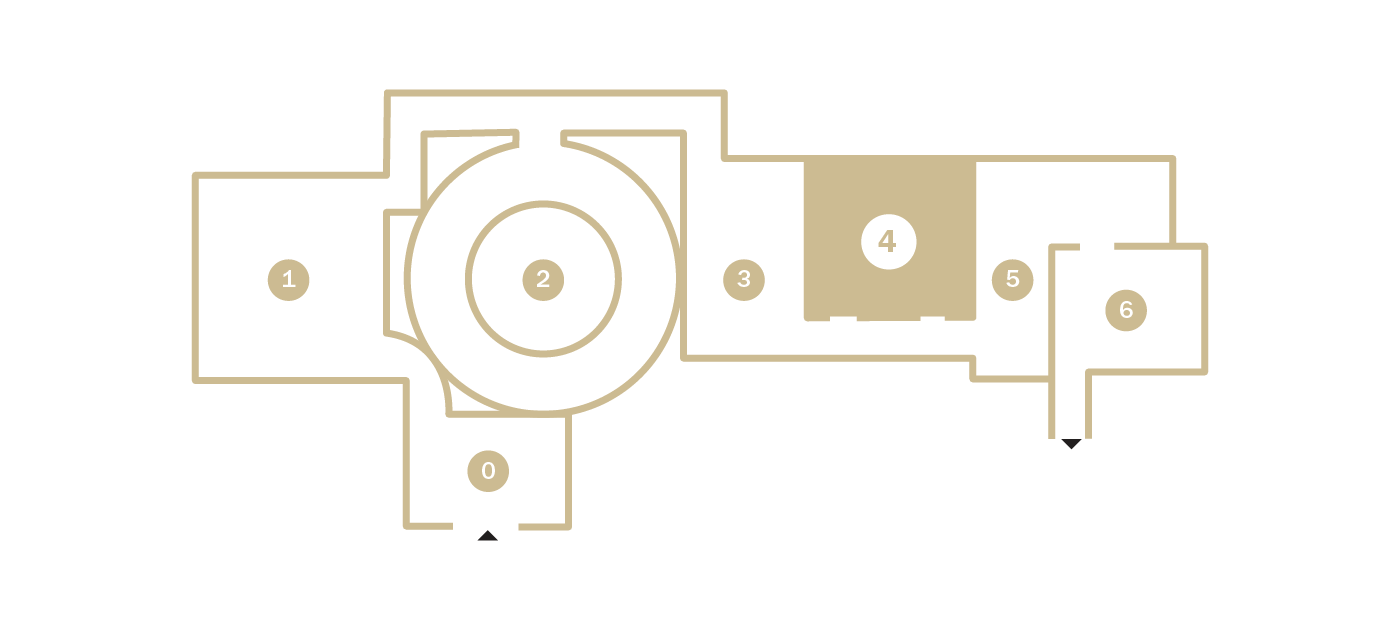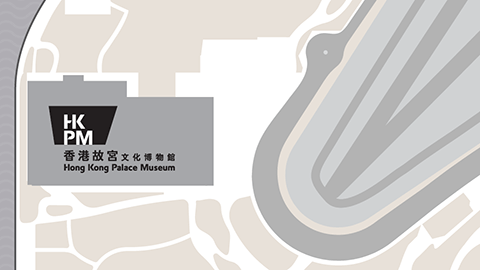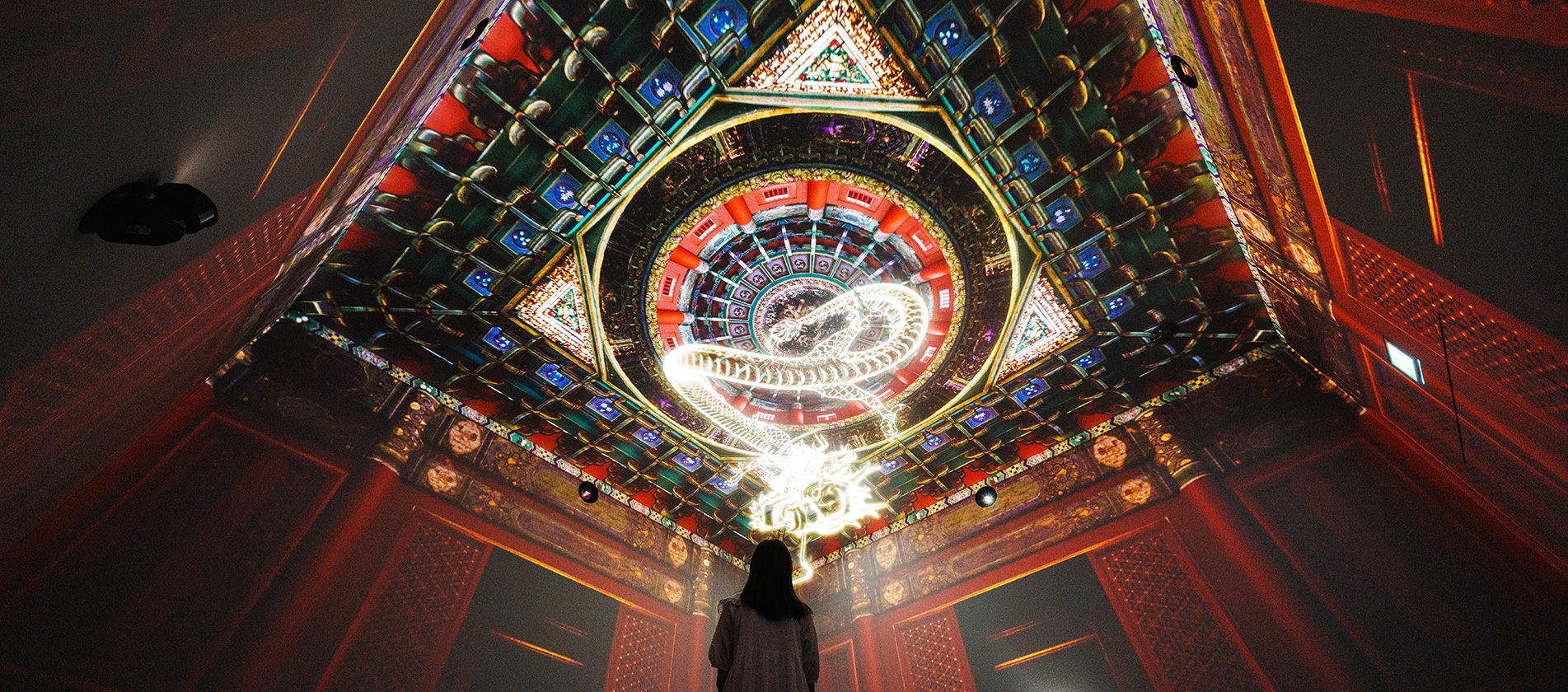The caisson ceiling, a hallmark of ancient Chinese architecture, graces the centres of significant buildings with ornate elegance. We are now in sight of the resplendent caissons of the Hall of Supreme Harmony, the Pavillion of One Thousand Autumns, and the Pavillion over a Pond. We invite you to gaze upwards and explore the “starry sky” envisioned by the ancestors.
Experience: Look up to enjoy the glorious caisson ceilings of the Palace Museum.
Audio Guide Transcript:
In the central ceilings of several major halls at the Palace Museum, you will often find an ornate, umbrella-shaped architectural feature known as a zaojing (caisson ceiling). Typically constructed with a round top and a square base, this design reflects the ancient Chinese cosmological belief known as tianyuan difang (heaven is a dome that covers the square earth).
- Caisson Ceiling in the Hall of Supreme Harmony
The Hall of Supreme Harmony, the largest and most prestigious building in the Palace Museum, represents the pinnacle of ancient Chinese architectural principles and decorative craftsmanship. Its caisson ceiling features a classic round top and square base structure composed of three layers: a square foundation, an octagonal middle tier adorned with intricately carved dragons and clouds, and a circular upper dome. At the centre lies a coiled dragon with its head lowered, clutching a sacred pearl in its mouth. This pearl, known as the Xuanyuan jing (Xuanyuan mirror), is an element unique to traditional Chinese architecture. The entire caisson ceiling is lavishly gilded in two tones of gold leaf, emanating an air of imperial grandeur and solemnity.
- Caisson Ceiling in the Pavilion of One Thousand Autumns
Within the Imperial Garden stands the Pavilion of One Thousand Autumns, a small yet refined structure featuring a distinctive caisson ceiling. Natural light filters through the clerestory windows above, illuminating the exquisite details of the ceiling. At the centre, a gilded coiled dragon seems to dance among floral motifs, its form fluid and dynamic. Design components called jiaochan (cicadas at the corner), which function as decorative transitions at the junctions of the octagonal and square tiers, are adorned with phoenixes and peonies. Above the circular dome, twelve short columns, twelve curved beams, and twenty-four bracket sets symbolise the twelve traditional Chinese time divisions and twenty-four solar terms, representing reverence for the rhythms of nature and the passage of time.
- Caisson Ceiling in the Pavilion over a Pond
Another remarkable example of the caisson ceiling is found in the Pavilion over a Pond, located in the south of the Palace of Compassion and Tranquillity garden. Distinct from its counterparts, this caisson ceiling features a painted flat ceiling. At its centre is a vibrant pattern titled “Jade Hall of Prosperity”, framed in the corners by green floral motifs. In the centre, a coiled dragon is painted against a blue background, surrounded by lively dragons in motion on a green ground and with an octagonal border of golden auspicious clouds. The jiaochan (cicadas at the corner) are decorated with phoenixes and peonies. Notably, the use of precious lapis lazuli pigment—rarely found in Chinese architectural painting—further highlights the exceptional artistic and cultural value of this ceiling.
Next Unit
Floorplan











